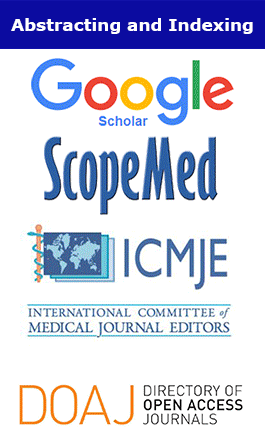Applied Medical Research. 2016;
4(2):(47-161)
Assessment of management of acute coronary syndrome in the emergency department Suez Canal university hospital
Adel Hamed Elbaih, Aza Z. Aleraky, Mohamed Elsakaya, Ahmed El Awer
Abstract
Background: Acute coronary syndrome (ACS) is largely manifested as ST-segment elevation myocardial infarction, nonSTEMI and unstable angina are a life-threatening condition. ACS can be successfully managed byadherence to established clinical guidelines. This study aimed to improve the quality of management process of patients presenting with acute coronary syndrome in the Emergency Department of Suez Canal University Hospital. Methods: The present study was observational, cross sectional study conducted in Emergency Department of Suez Canal University Hospital for 6 months (from December 2014 to June 2015) as a total of 94 patients matching inclusion criteria were enrolled in this study, data was collected in pre-organized data sheet by the researcher, as every management step of ACLS-2011 guideline for ACS was checked whether it is done or not for every patient included in the study, Disease management/outcome data was collected at admission and during the 1st 24 hrs of the in-hospital stay. The patients included in the study were divided into the following groups:STEMI with chest pain > 12 hrs, STEMI with chest pain < 12 hrs, NSTEMI, Unstable angina, normal or non diagnostic ECG group and the median percentage of adherence to ACLS-2011 guideline was estimated for each group separately then the median total percentage of adherence was estimated and the outcomes of all patients included in the study were assessed. Results: The present study revealed that the median percentage of adherence to (ACLS-2011) algorithm for ACS management in the Emergency Room of Suez Canal University Hospital was 45.3% and the percentage of adherence for each group included in the present study (STEMI with chest pain > 12 hrs, STEMI with chest pain < 12 hrs, NSTEMI, Unstable angina and the normal or non-diagnostic ECG group) was 44.87%, 45.8%, 50.9%, 51.14% and 28.9% respectively. Conclusions: The median percentage of adherence to ACLS-2011 guideline for ACS inthe Emergency Department of Suez Canal University Hospital was 45.3%, the median door to needle time was high (74.85±21) minutes and there is a need to close the gap between the guidelines and the ACS management in the Emergency Room of Suez Canal University Hospital.



